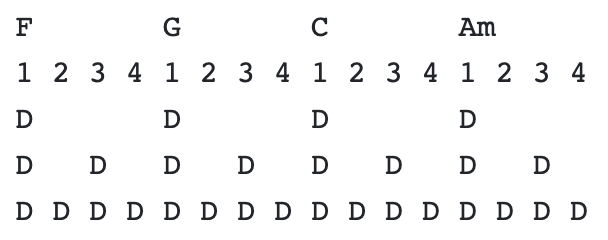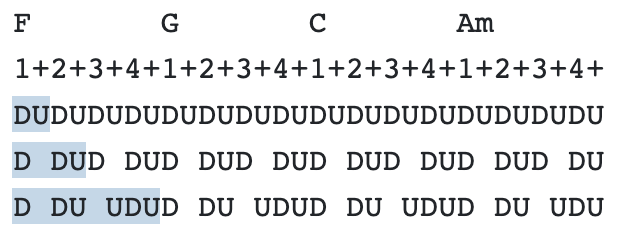Beginner strum patterns
Song chords indicate when to transition between chords, but usually don’t specify how to play the chords on the right hand. I recommend using a strum pattern.
A strum pattern is a regularly repeating sequence that you play independently of the singing. The notation is D (down strum) and U (up strum). I strum down with the nail on my index finger and up with the fleshy part of the finger. The spacing indicates what beats you strum on.
The most important step in learning beginner strum patterns is developing a sense of rhythm. Learn how to count, and start simple. For example, let's look at Viva la Vida by Coldplay (chords, cover). The chords are F, G, C, Am, and the chords transition every 4 beats. Count in your head "1 2 3 4 1 2 3 4". The simplest strum pattern you can play is to strum down (D) once for every new chord. Other simple strum patterns are strumming every 2 beats and strumming every beat.

You can also strum up (U). Count in your head "1+2+3+4+1+2+3+4+". For the following beginner strum patterns, down strums happen on the down beats (indicated by the numbers 1,2,3,4), and up strums happen on the off beats (indicated by +). A simple strumming pattern with up strums is to regularly alternate DU. Other more complex strum patterns are D DU and D DU UDU (island strum). I play island strum in my cover of Viva la Vida. It took me a year before I could reliably play island strum and sing at the same time, so don't be discouraged.
